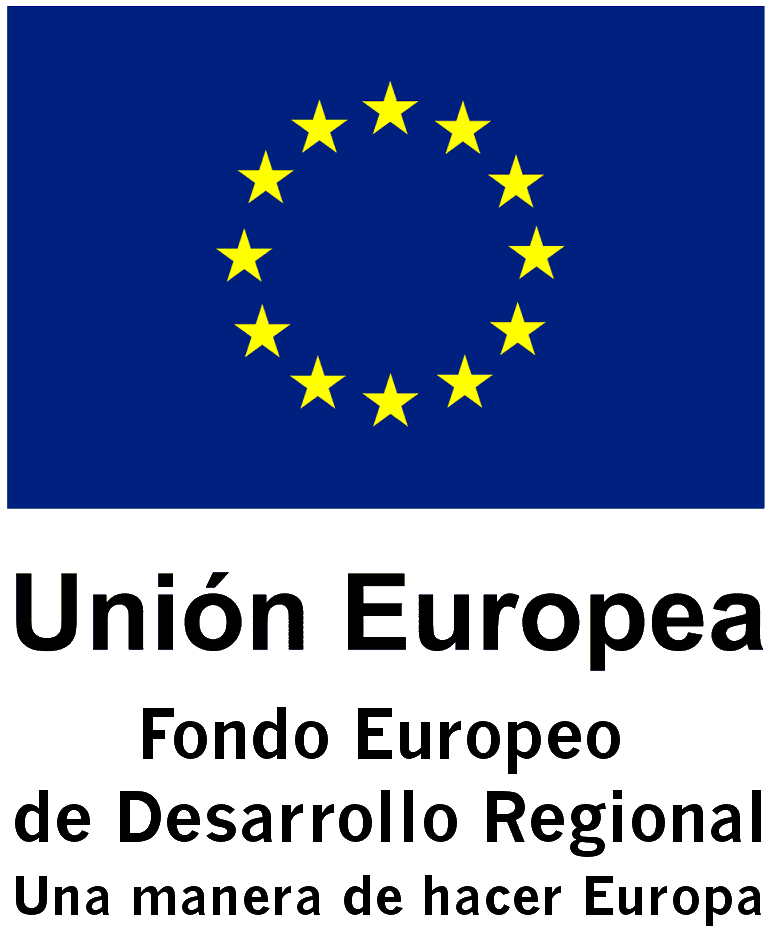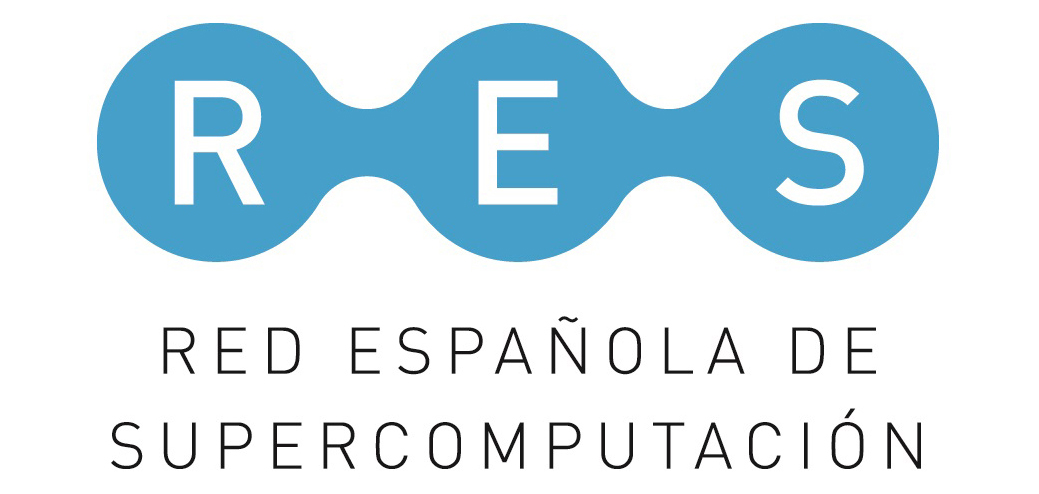Electromagnetismo y supercomputación para nanoestructuras plasmónicas. Aplicación a nanoantenas ópticas y metamateriales
- Luis Landesa Porras, José Manuel Taboada Varela, Francisco Javier Rivero Campos, Luis Bote Curiel y Mario Fernández Manzano. Departamento de Computadores y de las Comunicaciones de la Universidad de Extremadura.
The unprecedented ability of nano metallic (that is plasmonic) structures to concentrate light into deep-subwavelength volumes has propelled their use in a vast array of nanophotonic technologies and research endeavors. The field of plasmonics has grown dramatically over the past decade and still continues growing towards new directions that are continuously emerging. With the ability to produce highly confined optical fields, the conventional rules for light-matter interactions need to be re-examined,and researchers are venturing into new formulations. We are presenting a project, with the primary objective of extending the scope of applications of exact integral-equation (IE) method of moments (MoM) formulations to the electromagnetic analysis of plasmonic nanostructures and artificial materials(metamaterials) in visible and near-infrared frequency bands.
This new project can be seen as the natural continuation of the previous one in which the most efficient algorithms have been successfully combined with smart parallelizing strategies, resulting in highly efficient and scalable EM codes, having achieved the World Record in computational electromagnetics for several times. Now we confront a new challenge: to extend the use of exact MoM solutions to nanoscience and nanotechnology fields. So we must reformulate the integral equations in order to model plasmonic effects associated with resonant collective oscillations which appear in metals at optical frequencies. This basic objective will enable later application objectives, namely to go deep into the accurate design of optical nanoscale antennas and artificial materials and their applications. Optical antennas will allow the nanoscale control of the direction of photon emission, which will enhance many sensing and detection applications in the optical domain, such as nano-optical microscopy, spectroscopy and light emitting devices, including single-photon sources. Regarding the artificial materials, by removing conventional constraints on realizable properties, attainable in naturally occurring materials, the metamaterial concept enables the possibility of creating artificial media with unusual electromagnetic/optical properties, such as negative index of refraction, plasmonic behavior, etc.; which enables a wide range of applications in the fields of electromagnetic and optical technologies. We know that the objectives proposed in this project are in the leading edge frontier of science, but the experience in previous projects together with our solid background in electromagnetism constitute the best guarantees for the successful overcoming of the tasks involved in this new challenge, mainly taking into account that they are firmly grounded in classical electrodynamics.
- Supercomputing electromagnetic tools for plasmonic materials and metamaterials: The first objective is to extend the scope of applications of the SIE-MoM formulations and latest breakthroughs in fast and parallel integral-equation algorithms to the electromagnetic analysis of plasmonic nanostructures and artificial materials in visible and near-infrared frequency bands. This main objective is divided in the following partial objectives:
- SIE-MoM formulations for plasmonic materials and metamaterials: The basic SIE-MoM formulations will be developed for the solution of problems with multiple plasmonic and metamaterial objects. We will focus on formulations with proved high accuracy and convergence. These formulations will be adapted and further optimized to account for the quite different and non-naturally occurring electromagnetic response of metamaterials and plasmonic media at optical frequencies.
- Fast algorithms and parallelization in HPC computers: Efficient fast solving algorithms will be redesigned and adapted to the previous formulations by considering the unusual behavior of waves that might appear in these generalized media. The FMM and MLFMA will be chosen for shared-memory computers. For distributed and mixed memory configurations, the high scalability MLFMA-FFT will be adapted and parallelized, allowing to benefit from the availability of massively parallel supercomputers, with thousands of parallel processors and large amounts of memory.
- Engineering nanoscience applications: The other main objective is the application of the implemented advanced techniques to the precise electromagnetic analysis of artificial materials and plasmonic nanostructures. Among the vast number of applications we will focus on those that are most promising, in the leading edge of nanoscience and nanotechnology, and where greater benefits can be taken from the proposed simulation tools. This objective is divided in two partial objectives:
- Plasmonic nano-optical antennas: We will address the precise design of optical nanoscale antennas and array antennas for field enhancement and directional light emission. This will lead to important advances in many applications, from nano-optical microscopy and spectroscopy to quantum-computing. For example, we will attempt to demonstrate the feasibility of complete wireless nano-optical links supported by directive array nanoantennas. For the most challenging and computationally intensive tasks in the scope of this objective, we will count on the support provided by CESGA and CénitS supercomputing centers.
- Analysis and design of metamaterials: We will apply the SIE-MoM formulations to the solution of homogenized LHM problems. We will mainly focus on control of light applications, including the accurate design of hyperlenses, as well as on the design of electromagnetic selective frequency panels. At a second stage, we will address the detailed design of the microscopic plasmonic subunits to obtain the desired effective macroscopic parameters for artificial materials. This challenging task will require the resolution of extremely large matrix systems, for which we count on the support provided by CESGA and CénitS.
- Se ha extendido el método de los momentos basado en formulación integral superficial al análisis exacto de todo tipo de objetos penetrables arbitrarios en el contexto de las aplicaciones en nanociencia y nanotecnología.
- Se han aplicado los últimos avances en aceleración espectral a la resolución rápida, precisa y eficiente (bajo coste computacional) de este tipo de problemas.
- Utilizando las herramientas de simulación anteriores y las capacidades de cálculo del supercomputador LUSITANIA, del CénitS, se está acometiendo con gran éxito el diseño de distintas aplicaciones con gran impacto científico/tecnológico en el ámbito de la nanociencia y la nanotecnología:
- Diseño de nanoantennas plasmónicas directivas a frecuencias ópticas.
- Diseño de nanoenlaces directivos para comunicaciones intra/intercircuitales de gran interés para los futuros circuitos integrados ópticos en escalas nanométricas.
- Diseño de capas de invisibilidad para la ocultación de estructuras arbitrarias compuestas por materiales arbitrarios (PECs, dieléctricos, plasmónicos, metamateriales).
- Diseño de pócimas de invisibilidad para la ocultación de estructuras penetrables arbitrarias (dieléctricos, plasmónicos, metamateriales).
Todos los avances anteriores están en la frontera de la investigación en electromagnetismo computacional y presentan un gran interés en el contexto de las actuales y futuras aplicaciones nanotecnológicas. Estos avances se están plasmando en diferentes publicaciones en revistas con gran impacto del SCI y congresos nacionales e internacionales. Gran parte de estas contribuciones son por invitación. A continuación se enumeran las contribuciones a revistas y congresos con agradecimiento al CénitS.
- J. M. Taboada, M. G. Araújo, J. Rivero, L. Landesa, and F. Obelleiro, “Surface Integral Equation Solvers for Large-Scale Conductors, Metamaterials and Plasmonic Nanostructures,” Appl. Comput. Electrom. (ACES) Journal, vol. 27, no. 2, pp. 189-197, 2012. Paper invitado.
- J. M. Taboada, M. G. Araújo, F. Obelleiro, J. L. Rodríguez, L. Landesa, “MLFMA-FFT parallel algorithm for the solution of extremely large problems in electromagnetics,” to appear in Proceedings of the IEEE, Special issue on Large Scale Electromagnetic Computation for Modeling and Applications, Jan. 2013. DOI: 10.1109/JPROC.2012.2194269. Paper invitado.
- J. M. Taboada, M. G. Araújo, L. Landesa, and F. Obelleiro, “Supercomputing solution of large electromagnetic problems with parallel MLFMA-FFT,” 28th International Review of Progress in Applied Computational Electromagnetics (2012 ACES Conference), Columbus, Ohio (USA), 10-14 de abril de 2012. Ponencia invitada.
- J. M. Taboada, J. Rivero, L. Landesa, M. G. Araújo, and F. Obelleiro, "Optimization of invisibility cloaks by surface integral equation method", International Conference on Electromagnetics in Advanced Applications (ICEAA 2012), Cape Town, South Africa, September 2-7, 2012. Ponencia invitada.
- J. M. Taboada, M. G. Araújo, J. Rivero , L. Landesa, and F. Obelleiro, “Fast Surface Integral Equation Formulations for Large-Scale Conductors, Metamaterials, and Plasmonic Problems”, International Conference on Electromagnetics in Advanced Applications (ICEAA 2012), Cape Town, South Africa, September 2-7, 2012. Ponencia invitada.
- J. Rivero, J. M.Taboada, L. Landesa, “Optimization of invisibility cloaks by surface integral equation method”, XXVII Simposium Nacional de la Unión Científica Internacional de Radio (URSI 2012), Elche (Alicante), 12-14 de septiembre de 2012.
- J. Rivero, J. M . Taboada, L. Landesa, “Design of Invisibility Cloaks using Surface Integral Equation Method”, Sixth International Congress on Advanced Electromagnetic Materials in Microwaves and Optics (Metamaterials 2012), St. Petersburg, Russia, 17-22 September 2012.
- J. Rivero, J.M. Taboada, L. Landesa, M. G. Araújo, F. Obelleiro, “Optimized design of multilayer invisibility cloaks for arbitrary geometries, ” 7th Eurpoean Conference on Antennas and Propagation – EUCAP 2012, Gonthenburg, 8-12 april 2013.
- J. M. Taboada, L. Landesa, M. G. Araújo, J. Rivero, D. M. Solís, L. Bote, F. Obelleiro, and J. L. Rodríguez, “Fast Surface Integral Equation Methods for Electromagnetic solution of Large-Scale Conductors, Metamaterials and Optical Nano-antennas,” VI LEMA-EPFL Workshop on Integral Techniques for Electromagnetics (INTELECT’2012), Sevilla, 19 octubre 2012. Ponencia invitada.


